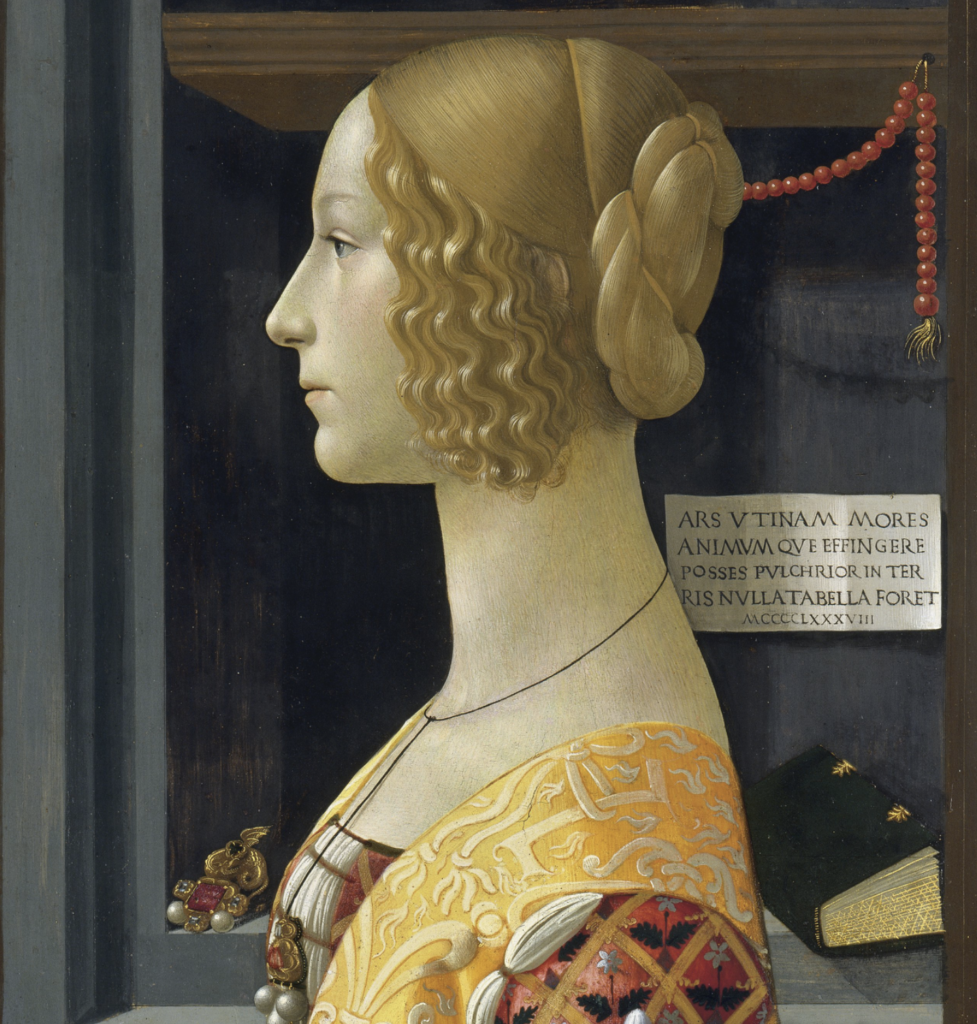
By P. F. Sommerfeldt –
If I had to name one of the jewels of European museum collections not enough people visit, the Thyssen-Bornemisza Museum in Madrid would be high on that list. Its iconic collection of Renaissance paintings can compete with much larger holdings especially because it is not so much the famous painters but rather the highest quality of the paintings.
One gem that really caught my attention this past March was the Domenico Ghirlandaio portrait of Giovanna Tornabuoni painted in 1488. The golden and crimson hues of textiles balanced by the equally shimmering curls of hair and porcelain skin make a statement on their own, but it is the inclusion of an epigram in a cartellino (sort of a hanging postcard on the right of the portrait) of the Roman poet Martial that cements the uniqueness of this painting of a beautiful woman but an epigram addressed to Art itself: “Art, if only you could reproduce the character and the spirit. There would be no finer portrait in the world”.” Ghirlandaio also included the date of this painting on the added epigram cartellino “paper” plate: MCCCCLXXXVIII or 1488.
A Florentine artist of the third wave of the Renaissance, Ghirlandaio’s work is noted for its distillation of actual reality into precise visual snippets of polished sections somewhat influenced by Flemish detail but likely reflecting the fact that his father (Tomasso Bigordi) was a goldsmith according to Vasari who made gilded garlands for special occasions for wealthy patrons, hence the more popular name ghirlandaio. This precision of detail can be seen in the three-dimensional shaded surface of the raised floral embroidery and sleeves of Giovanna’s gold tunic and the gold and rubies with pearls on her jewelry (including a gold dragon) as well as the golden curls of her hair, all possibly symbolic but also possibly ambiguous. Typical of the time, her string of coral beads hung behind her were seen as apotropaic to ward off evils such as infertility or diabolical influences including temptations of inordinate desire.
Perhaps not always the central focus of this painting, Giovanna’s face in profile is amazingly alabastrous with just a hint of pink cheek and more color on her lips which are almost pursed in emotional neutrality. The focus of her eyes appears distant or abstracted, as if she is thinking about something we cannot easily know. But Ghirlandaio has certainly depicted her light-filled profile face as a decidedly chiaroscuro contrast against the darker open cabinet background. Although we cannot determine if the dark but gilded hinge book behind her is a missal, prayer book or other religious text – or even a personal diary – also embellished in gold crossing lines in its pages, we cannot but wonder what secrets she knows and how aware she might be of her beauty. Ghirlandaio certainly appreciated her flawlessness, hence the Martial epigram that reminds us that we cannot easily see what lies underneath the surface of the mind or probe depth of spirit or know the quality of character in anyone, even one so beautiful and unblemished. Since as a tabula rasa, a rich young person may be relatively untested by lifelong crises as an older person may have experienced – although not always the case – Giovanna’s dispassionate young face is unmarked by years of stress or the lines that come with long-term emotional traumas in all their vicissitudes. Like Plato and Aristotle who attempt to perceive the relationship between soul and body, Montaigne considerably later speculatively emphasizes the elusive distinction between inner pathos and what the prosopos or face may show of one’s true character. Ghirlandaio, possibly influenced by Marcelo Ficino’s Neoplatonic humanistic interpretations of the anima or soul, seems to understand this dilemma of perception.